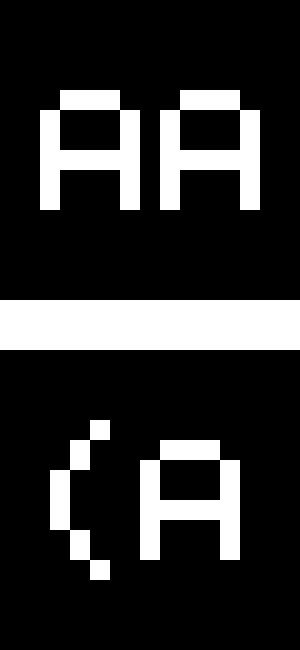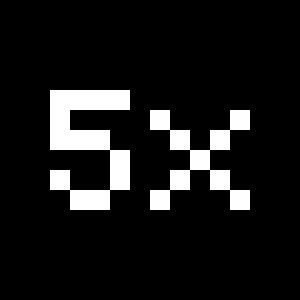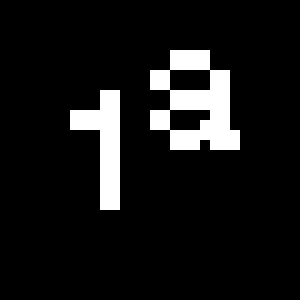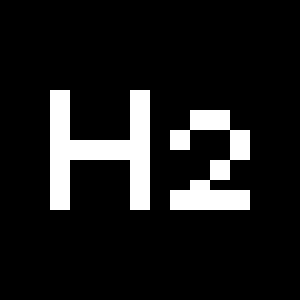Pharma Condensed
Condensed Regular
Condensed Italic
Condensed Bold
Condensed Bold Italic
Pharma
Regular
Italic
Bold
Bold Italic
OpenType Features
«Optimo»
(4−7+8)
(){}‹›«»-–—
+±÷−=≠¬
«Optimo»
(4−7+8)
(){}‹›«»-–—
+±÷−=≠¬
5x5
A-A B–0 1—2
-> –> <– <-
5x5
A-A B–0 1—2
-> –> <– <-
5x5
5x5
1/2 1/3 2/3 1/4
3/4 3/8 5/8 7/8
3/4 3/8 5/8 7/8
1/2 1/3 2/3 1/4
3/4 3/8 5/8 7/8
3/4 3/8 5/8 7/8
1/2 1/4 3/4 0/0 0/00
1/2 1/4 3/4 0/0 0/00
2a 2o
2a 2o
H0123456789
H0123456789
H0123456789
H0123456789
H0123456789
Habcdefghijklm
Hnopqrstuvwxyz
Habcdefghijklm
Hnopqrstuvwxyz
H0123456789
Habcdefghijklm
Hnopqrstuvwxyz
Habcdefghijklm
Hnopqrstuvwxyz
fi fl
fi fl
Character Map
Uppercases
A
AAU+0041
BBBU+0042
CCCU+0043
DDDU+0044
EEEU+0045
FFFU+0046
GGGU+0047
HHHU+0048
IIIU+0049
JJJU+004a
KKKU+004b
LLLU+004c
MMMU+004d
NNNU+004e
OOOU+004f
PPPU+0050
QQQU+0051
RRRU+0052
SSSU+0053
TTTU+0054
UUUU+0055
VVVU+0056
WWWU+0057
XXXU+0058
YYYU+0059
ZZZU+005a
Lowercases
a
aaU+0061
bbbU+0062
cccU+0063
dddU+0064
eeeU+0065
fffU+0066
gggU+0067
hhhU+0068
iiiU+0069
jjjU+006a
kkkU+006b
lllU+006c
mmmU+006d
nnn superscriptU+006e
oooU+006f
pppU+0070
qqqU+0071
rrrU+0072
sssU+0073
tttU+0074
uuuU+0075
vvvU+0076
wwwU+0077
xxxU+0078
yyyU+0079
zzzU+007a
Accented Uppercases
À
ÀA graveU+00c0
ÁÁA acuteU+00c1
ÂÂA circumflexU+00c2
ÃÃA tildeU+00c3
ÄÄA dieresisU+00c4
ĀĀA macronU+0100
ĂĂA breveU+0102
ÅÅA ringU+00c5
ĄĄA ogonekU+0104
ÆÆÆU+00c6
ǼǼÆ acuteU+01fc
ĆĆC acuteU+0106
ĈĈC circumflexU+0108
ČČC caronU+010c
ĊĊC dot accentU+010a
ÇÇC cedillaU+00c7
ĎĎD caronU+010e
ĐĐDcroatU+0110
ÐÐEthU+00d0
ÈÈE graveU+00c8
ÉÉE acuteU+00c9
ÊÊE circumflexU+00ca
ĚĚE caronU+011a
ËËE dieresisU+00cb
ĒĒE macronU+0112
ĔĔE breveU+0114
ĖĖE dot accentU+0116
ĘĘE ogonekU+0118
ĜĜG circumflexU+011c
ĞĞG breveU+011e
ĠĠG dot accentU+0120
ĢĢG comma accentU+0122
ĤĤH circumflexU+0124
ĦĦH barU+0126
ÌÌI graveU+00cc
ÍÍI acuteU+00cd
ÎÎI circumflexU+00ce
ĨĨI tildeU+0128
ÏÏI dieresisU+00cf
ĪĪI macronU+012a
ĬĬI breveU+012c
İİI dot accentU+0130
ĮĮI ogonekU+012e
IJIJIJU+0132
ĴĴJ circumflexU+0134
ĶĶK comma accentU+0136
ĹĹL acuteU+0139
ĽĽL caronU+013d
ĻĻL comma accentU+013b
ŁŁL slashU+0141
ĿĿL dotU+013f
ŃŃN acuteU+0143
ŇŇN caronU+0147
ÑÑN tildeU+00d1
ŅŅN comma accentU+0145
ŊŊEngU+014a
ÒÒO graveU+00d2
ÓÓO acuteU+00d3
ÔÔO circumflexU+00d4
ÕÕO tildeU+00d5
ÖÖO dieresisU+00d6
ŌŌO macronU+014c
ŎŎO breveU+014e
ŐŐO hungarumlautU+0150
ØØO slashU+00d8
ǾǾO slash acuteU+01fe
ŒŒŒU+0152
ÞÞThornU+00de
ŔŔR acuteU+0154
ŘŘR caronU+0158
ŖŖR comma accentU+0156
ŜŜS circumflexU+015c
ŠŠS caronU+0160
ŚŚS acuteU+015a
ŞŞS cedillaU+015e
ȘȘS comma accentU+0218
ŤŤT caronU+0164
ȚȚT comma accentU+021a
ŢŢT cedillaU+0162
ŦŦT barU+0166
ÙÙU graveU+00d9
ÚÚU acuteU+00da
ÛÛU circumflexU+00db
ŨŨU tildeU+0168
ÜÜU dieresisU+00dc
ŪŪU macronU+016a
ŬŬU breveU+016c
ŮŮU ringU+016e
ŰŰU hungarumlautU+0170
ŲŲU ogonekU+0172
ẀẀW graveU+1e80
ẂẂW acuteU+1e82
ŴŴW circumflexU+0174
ẄẄW dieresisU+1e84
ỲỲY graveU+1ef2
ÝÝY acuteU+00dd
ŶŶY circumflexU+0176
ŸŸY dieresisU+0178
ŹŹZ acuteU+0179
ŽŽZ caronU+017d
ŻŻZ dot accentU+017b
Accented Lowercases
à
àa graveU+00e0
ááa acuteU+00e1
ââa circumflexU+00e2
ããa tildeU+00e3
ääa dieresisU+00e4
āāa macronU+0101
ăăa breveU+0103
ååa ringU+00e5
ąąa ogonekU+0105
æææU+00e6
ǽǽæ acuteU+01fd
ććc acuteU+0107
ĉĉc circumflexU+0109
ččc caronU+010d
ċċc dot accentU+010b
ççc cedillaU+00e7
ďďd caronU+010f
đđdcroatU+0111
ððethU+00f0
èèe graveU+00e8
éée acuteU+00e9
êêe circumflexU+00ea
ěěe caronU+011b
ëëe dieresisU+00eb
ēēe macronU+0113
ĕĕe breveU+0115
ėėe dot accentU+0117
ęęe ogonekU+0119
ĝĝg circumflexU+011d
ğğg breveU+011f
ġġg dot accentU+0121
ģģg comma accentU+0123
ĥĥh circumflexU+0125
ħħh barU+0127
ììi graveU+00ec
ííi acuteU+00ed
îîi circumflexU+00ee
ĩĩi tildeU+0129
ïïi dieresisU+00ef
īīi macronU+012b
ĭĭi breveU+012d
ııdotless iU+0131
įįi ogonekU+012f
ijijijU+0133
ĵĵj circumflexU+0135
ȷȷdotless jU+0237
ķķk comma accentU+0137
ĺĺl acuteU+013a
ľľl caronU+013e
ļļl comma accentU+013c
łłl slashU+0142
ŀŀl dotU+0140
ńńn acuteU+0144
ňňn caronU+0148
ññn tildeU+00f1
ņņn comma accentU+0146
ŋŋengU+014b
òòo graveU+00f2
óóo acuteU+00f3
ôôo circumflexU+00f4
õõo tildeU+00f5
ööo dieresisU+00f6
ōōo macronU+014d
ŏŏo breveU+014f
őőo hungarumlautU+0151
øøo slashU+00f8
ǿǿo slash acuteU+01ff
œœœU+0153
þþthornU+00fe
ŕŕr acuteU+0155
řřr caronU+0159
ŗŗr comma accentU+0157
śśs acuteU+015b
ŝŝs circumflexU+015d
ššs caronU+0161
şşs cedillaU+015f
șșs comma accentU+0219
ßßsharp sU+00df
ťťt caronU+0165
țțt comma accentU+021b
ţţt cedillaU+0163
ŧŧt barU+0167
ùùu graveU+00f9
úúu acuteU+00fa
ûûu circumflexU+00fb
ũũu tildeU+0169
üüu dieresisU+00fc
ūūu macronU+016b
ŭŭu breveU+016d
ůůu ringU+016f
űűu hungarumlautU+0171
ųųu ogonekU+0173
ẁẁw graveU+1e81
ẃẃw acuteU+1e83
ŵŵw circumflexU+0175
ẅẅw dieresisU+1e85
ỳỳy graveU+1ef3
ýýy acuteU+00fd
ŷŷy circumflexU+0177
ÿÿy dieresisU+00ff
źźz acuteU+017a
žžz caronU+017e
żżz dot accentU+017c
Standard Ligatures
ff
ffffligaU+0066 U+0066
ftftftligaU+0066 U+0074
fftfftfftligaU+0066 U+0066 U+0074
Punctuation
-
-hyphenU+002d
––en dashU+2013
——em dashU+2014
((parenthesis leftU+0028
))parenthesis rightU+0029
[[bracket leftU+005b
]]bracket rightU+005d
{{curly bracket leftU+007b
}}curly bracket rightU+007d
‹‹guillemot single leftU+2039
››guillemot single rightU+203a
««guillemot leftU+00ab
»»guillemot rightU+00bb
||barU+007c
¦¦broken barU+00a6
··period centeredU+00b7
@@atU+0040
¡¡exclam downU+00a1
¿¿question downU+00bf
!!exclamU+0021
??questionU+003f
..periodU+002e
::colonU+003a
,,commaU+002c
;;semicolonU+003b
……ellipsisU+2026
__underscoreU+005f
‘‘quote leftU+2018
’’quote rightU+2019
““quote double leftU+201c
””quote double rightU+201d
‚‚quote single baseU+201a
„„quote double baseU+201e
''quote singleU+0027
""quote doubleU+0022
••bulletU+2022
//slashU+002f
\\back slashU+005c
Lining Figures
0
0zero figureU+0030
11one figureU+0031
22two figureU+0032
33three figureU+0033
44four figureU+0034
55five figureU+0035
66six figureU+0036
77seven figureU+0037
88eight figureU+0038
99nine figureU+0039
Numerators
0
0zero numeratornumrU+0030
11one numeratornumrU+0031
22two numeratornumrU+0032
33three numeratornumrU+0033
44four numeratornumrU+0034
55five numeratornumrU+0035
66six numeratornumrU+0036
77seven numeratornumrU+0037
88eight numeratornumrU+0038
99nine numeratornumrU+0039
Denominators
0
0zero denominatordnomU+0030
11one denominatordnomU+0031
22two denominatordnomU+0032
33three denominatordnomU+0033
44four denominatordnomU+0034
55five denominatordnomU+0035
66six denominatordnomU+0036
77seven denominatordnomU+0037
88eight denominatordnomU+0038
99nine denominatordnomU+0039
Superscripts/Superiors
0
0zero superscriptsupsU+0030
11one superscriptsupsU+0031
22two superscriptsupsU+0032
33three superscriptsupsU+0033
44four superscriptsupsU+0034
55five superscriptsupsU+0035
66six superscriptsupsU+0036
77seven superscriptsupsU+0037
88eight superscriptsupsU+0038
99nine superscriptsupsU+0039
aaa superscriptsupsU+0061
bbb superscriptsupsU+0062
ccc superscriptsupsU+0063
ddd superscriptsupsU+0064
eee superscriptsupsU+0065
fff superscriptsupsU+0066
ggg superscriptsupsU+0067
hhh superscriptsupsU+0068
iii superscriptsupsU+0069
jjj superscriptsupsU+006a
kkk superscriptsupsU+006b
lll superscriptsupsU+006c
mmm superscriptsupsU+006d
nnn superscriptsupsU+006e
ooo superscriptsupsU+006f
ppp superscriptsupsU+0070
qqq superscriptsupsU+0071
rrr superscriptsupsU+0072
sss superscriptsupsU+0073
ttt superscriptsupsU+0074
uuu superscriptsupsU+0075
vvv superscriptsupsU+0076
www superscriptsupsU+0077
xxx superscriptsupsU+0078
yyy superscriptsupsU+0079
zzz superscriptsupsU+007a
Prebuilt Fractions
¼
¼one quarterU+00bc
½½one halfU+00bd
¾¾three quartersU+00be
Symbols
&
&ersandU+0026
%%percentU+0025
‰‰perthousandU+2030
©©copyrightU+00a9
®®registeredU+00ae
™™trademarkU+2122
°°degreeU+00b0
§§sectionU+00a7
¶¶paragraphU+00b6
**asteriskU+002a
††daggerU+2020
‡‡dagger doubleU+2021
##number signU+0023
Mathematical Symbols
+
+plusU+002b
−−minusU+2212
±±plus minusU+00b1
××multiplyU+00d7
÷÷divideU+00f7
==equalU+003d
≠≠not equalU+2260
≈≈approximately equal toU+2248
<<lessU+003c
>>greaterU+003e
≤≤less equalU+2264
≥≥greater equalU+2265
¬¬logical notU+00ac
∞∞infinityU+221e
~~ascii tildeU+007e
^^ascii circumflexU+005e
µµmuU+00b5
∫∫integralU+222b
ΩΩOmegaU+2126
ππpiU+03c0
∂∂partial differentialU+2202
∆∆DeltaU+2206
∏∏productU+220f
∑∑summationU+2211
√√radicalU+221a
◊◊lozengeU+25ca
Currencies
$
$dollarU+0024
¢¢centU+00a2
££pound sterlingU+00a3
¥¥Japanese yen/Chinese yuanU+00a5
€€euroU+20ac
ƒƒflorinU+0192
¤¤currencyU+00a4
Ordinals
ª
ªordfeminieU+00aa
ººordmasculineU+00ba
About
Pharma is a sans-serif typeface inspired by the interconnection between organic and technological aesthetics. This hybrid inspiration is translated through a sophisticated structure and has been adapted for both print and screen.
Initiated in 2000, Julien Gaillardot began by drawing condensed geometric letterforms that would subsequently mutate along multiple axes. Rounded forms appear throughout the junctions and terminals, expending in soft joints, while in other instances behaving as ink traps. These morphing curves bring an organic quality to the initial angular structure.
About
© 1998–2026 Optimo Sàrl, All rights reserved







